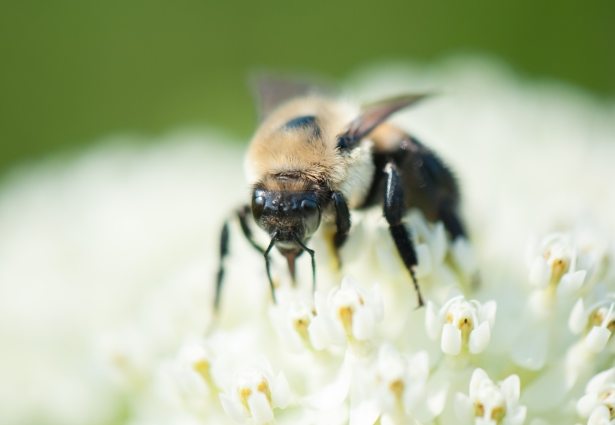Ontario Nature Blog
Receive email alerts about breaking conservation
and environmental news.
© Lora Denis
Wildflower farm near Orillia © Matt Jenkins
Photography has always been a passion of mine. At first, I was interested only in macro photography, but soon enough I began challenging myself to look at the big picture and shoot landscapes. Now I enjoy capturing all types of images.
Until recently, I had never considered photography to be a potential career. However, with the skills I have learned as an Environmental Visual Communication student at Fleming College, I am confident in my abilities and look forward to employment in nature photography and communications.
Insects have always fascinated me, and I am thrilled to share with you a collection of my favorite insect photos.

Fall is a good time to shoot spiders, which seem to be everywhere as the seasons change. Here is a cross orb weaver spider making quick work of a bee that flew into its web. This shot was taken in Oakville.

Found near Cambridge, this is probably the biggest fly I have ever seen in Ontario. I was shooting something completely separate that day but how could I resist shooting an insect with so much character?

This beautiful Polyphemus moth dispels the myth of boring moths. I took this photo at the 2014 Ontario BioBlitz which took place in the Humber River Valley at the end of May.

This spider was about to fall victim to my dad’s gardening techniques when I came to its rescue and snapped its photo before setting it free. Staying perfectly still, it was the perfect model and allowed me to do what some people would cringe at – get nice and close!

A beekeeping elective that I took while pursuing a Bachelor of Commerce degree at Guelph University instilled in me a fascination with all types of bees. Photographed this year at the Toronto Botanical Garden, this bee was doing its part to keep the gardens beautiful by pollinating every flower in sight.

Coneflowers are popular feeding stations for bees, as seen in this photo. If you look closely, you can spot the proboscis (tongue) of the bee.

This hickory tussock moth caterpillar defends itself by releasing oil that causes a stinging rash. Better to photograph it than touch it.

Gananoque Lake Nature Reserve © Smera Sukumar
Gorgeous photos! I love the textures and all the intricate structures captured on the insects and spider.
So beautiful! Thanks for sharing!!